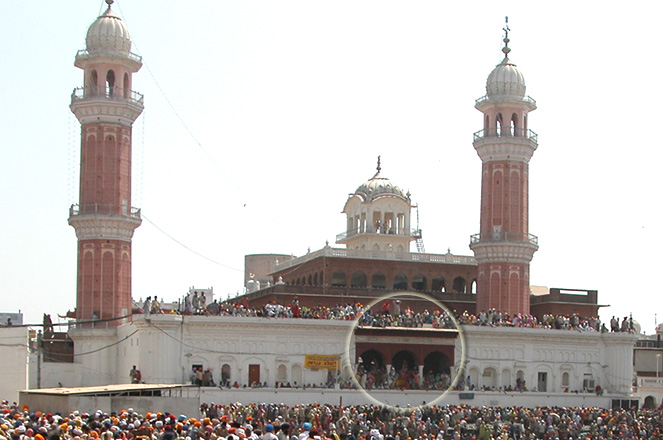The word Bunga stands for a place to live. During the Sikh Empire, several Sikh Generals and Royal Families got constructed nearly 99 Bungas in the walled city of Amritsar. Out of which the one constructed by Ramgarhia Missal (Sect) to provide accommodation to the Devotees coming to Sri Darbar Sahib Amritsar (The Golden Temple Amritsar). There used to be 22 watch towers around the Sri Darbar Sahib Amritsar (The Golden Temple Amritsar) in order to keep a watch on the enemy (invaders). By the time 20 finished and only two towers survived. On the ground floor of the Bunga, some rooms with balcony and a open space is there. The whole building depicts the rare work of Sikh Architecture. One big basement is also there, but the entry is restricted.

Ramgarhia Bunga is a historically significant structure located in the city of Amritsar, Punjab, India. "Bunga" refers to a traditional residential complex for Sikh warriors and travelers. The Ramgarhia Bunga holds great importance in Sikh history and culture and stands as a symbol of the community's valor and resilience.
The Ramgarhia Bunga was constructed in the late 18th century by the Ramgarhia Misl, a prominent Sikh warrior clan known for their craftsmanship and military skills. It was built as a fortress-like structure to provide shelter and protection to Sikh warriors and their families during times of conflict. The word "Ramgarhia" refers to the lineage of warriors.
The architecture of Ramgarhia Bunga is a fusion of Sikh and Mughal styles, reflecting the influences of both cultures. The complex features a fortified wall, gateways, and a central courtyard surrounded by several rooms. The rooms were used as residences, while the central courtyard served as a gathering place for community events and discussions.
Inside the Ramgarhia Bunga, one can find various artifacts, paintings, and historical relics that showcase the rich heritage of the Sikh community. The complex also houses a small museum that exhibits traditional Sikh weapons, manuscripts, and other significant artifacts related to Sikh history and culture.
Apart from its historical significance, Ramgarhia Bunga serves as a center for religious and cultural activities. Sikh pilgrims and visitors from all over the world come to pay their respects and seek inspiration at this revered site. The complex is particularly significant during festivals like Vaisakhi, when it attracts a large number of devotees.
Over the years, the Ramgarhia Bunga has undergone several renovations and restorations to preserve its architectural beauty and historical importance. Efforts have been made to maintain the original design and craftsmanship of the structure while ensuring its structural integrity.
Ramgarhia Bunga stands as a testament to the bravery and resilience of the Sikh community. It serves as a reminder of their rich history, culture, and contributions to the region. This magnificent structure continues to inspire and educate visitors about Sikhism and its values, making it an integral part of Punjab's cultural heritage.